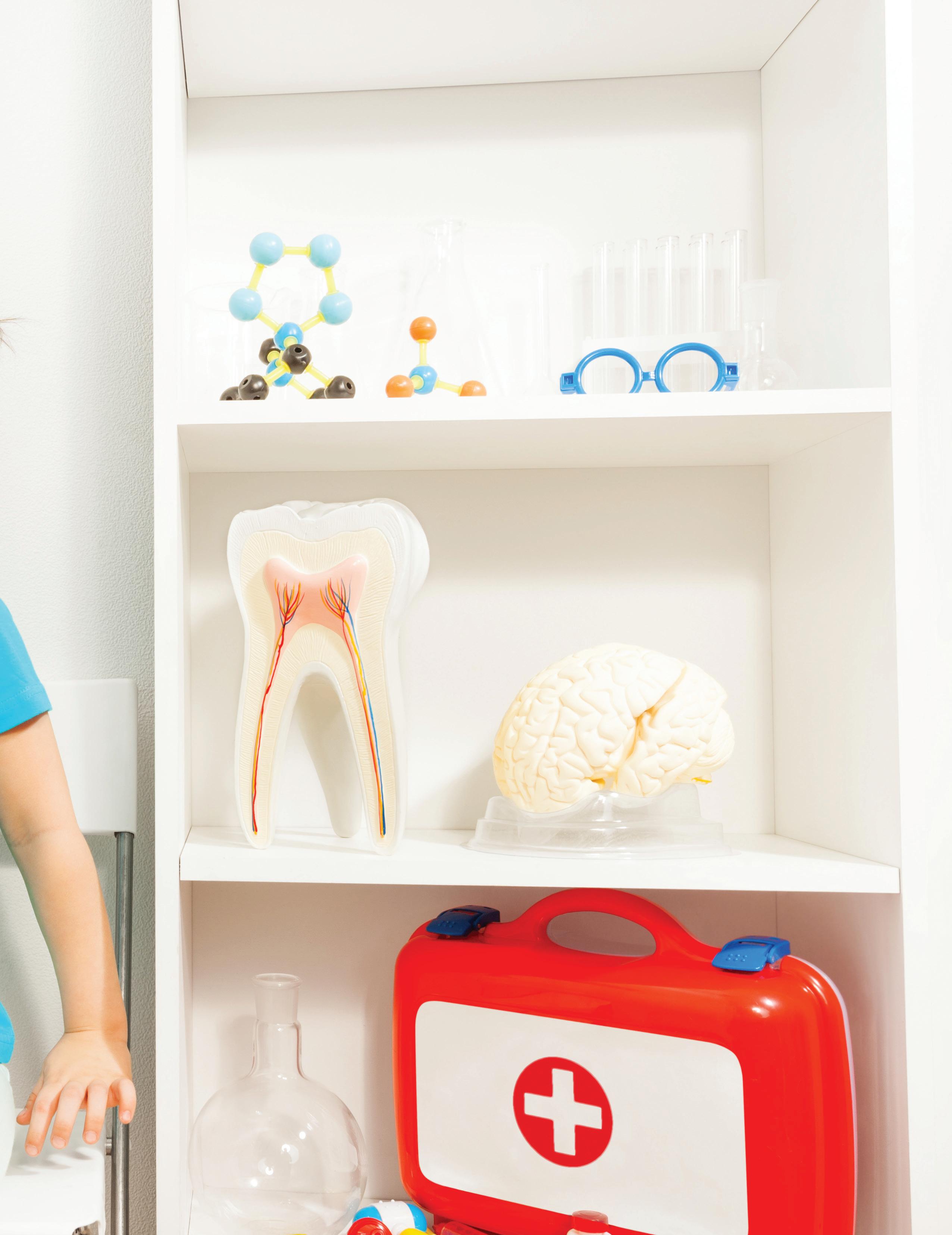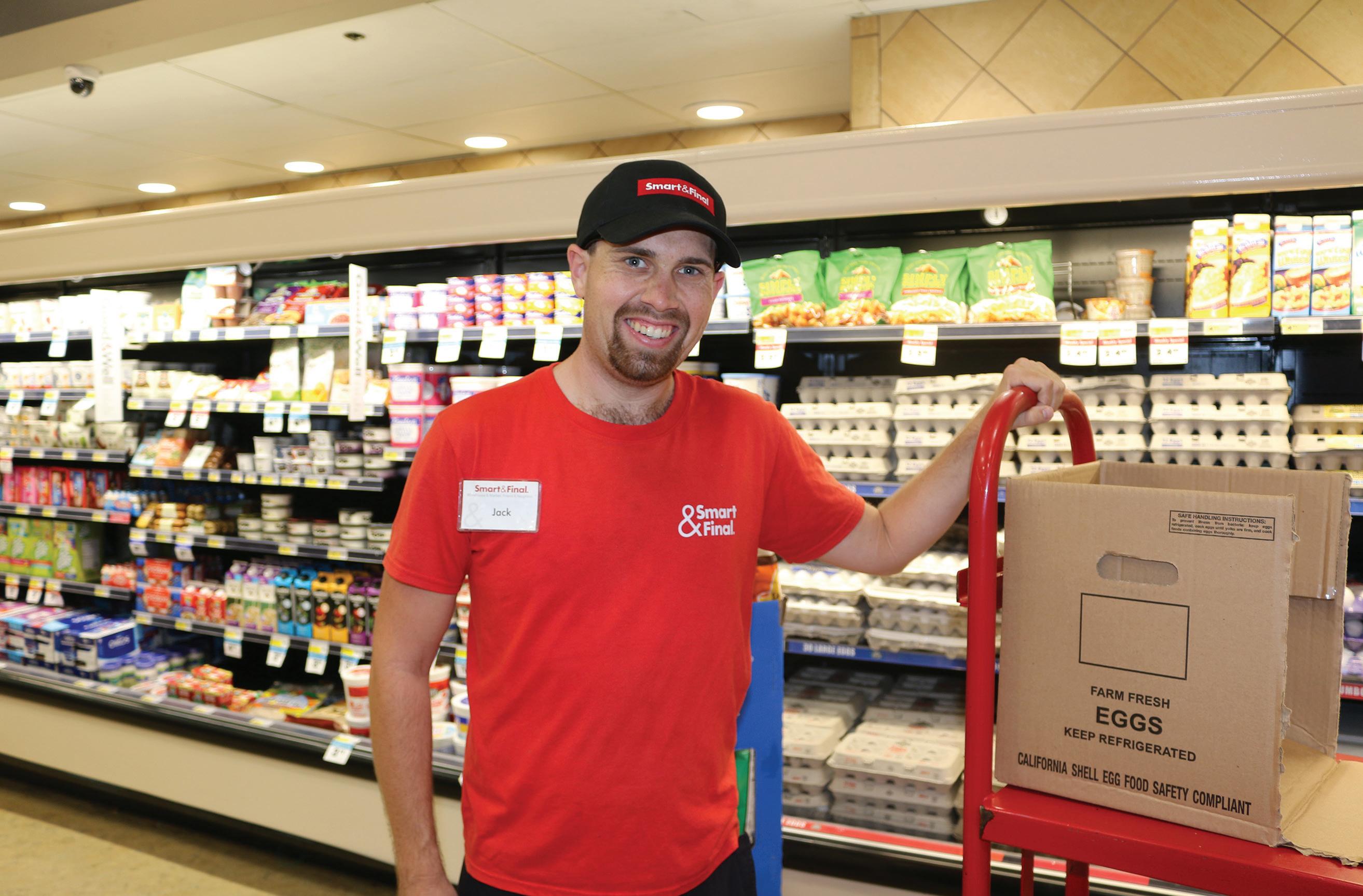
4 minute read
Tooth Smarts
Early Preventative Care Improves Smiles for Kids with Disabilities.
Parents might not think it’s imperative to be concerned about dental care before a child has teeth, but that simply isn’t true. Since the mouth is where most bacteria enters the body, tooth decay can be damaging to the whole body. It can enter the blood stream and cause heart issues, be breathed into the lungs, and cause brain inflammation and memory loss. According to the American Association of Pediatrics, 56 percent of all children will have some form of tooth decay by age 15, making it the most common chronic childhood disease; parents can’t start too soon with preventative care.
Dr. Parvathi Pokala is a pediatric dentist with surgery privileges at Rady Children’s Hospital and an expert on treating children with special needs. “It is important… to avoid letting babies fall asleep with a bottle of milk or formula and [for] mothers to avoid nursing their babies in bed with them throughout the night,” she says. Milk and formula pooling on the gums during sleep can cause problems way before the teeth erupt.
Tooth decay is a transmissible disease. Using your own mouth to clean a baby’s pacifier or test the temperature of a bottle can transmit bacteria that causes decay.
Kids with special needs tend to require more oral care. Brady, 15, has 22q11.2 Deletion Syndrome. 22q has a high risk for cleft lip, cleft palate and sub-mucosal palate—a palatal difference hidden under the soft tissue at the back of the mouth. He was treated by a developmental dentist and speech-language pathologist to ensure dental health and proper swallowing. Children with 22q and other anomalies often have teeth that come in with weakened enamel; a sealant is painted over these teeth to ward off bacterial damage as they erupt from the gums. Brady was referred to Dr. Pokala when he was under a year old. “There are many syndromes that have dental and jaw related problems,” says Dr. Pokala. “It is important for us to recognize dental anomalies, help families establish a good preventive care plan to maintain healthy teeth, and to plan for treatment to improve function and esthetics.”
Since Brady does not lose his baby teeth naturally, Dr. Pokala developed a strategic method to pull each baby tooth to make a straight path for emerging adult teeth, while still allowing for proper chewing of food. He had X-rays as early as he could stand it, with new technologies allowing less invasive forms of imaging. The pictures allowed Dr. Pokala to see the path of tooth growth before they erupted. Medically fragile, immunecompromised or chronically ill children are often at risk for dental decay. The mouth harbors trillions of bacteria that are delicately kept in check through the removal of plaque during brushing and the production of healthy amounts of saliva. Saliva neutralizes acids, which can eat away at teeth, and carries a community of anti-microbials that keep bacterial growth from exploding. Kids who lack healthy saliva levels and are continually in healthcare settings where bacteria spread are more likely to develop pneumonia. Children who breath through their mouths during times of congestion need to make sure they drink plenty of fluids and brush more frequently. Tooth strength can also be compromised by low calcium, so kids with hypo and hypercalcemia need to be monitored closely by a dentist and doctor.
Stress also plays a factor. Stress can alter salivary chemistry, lower immune responses and lower pH, which can lead to the demineralization of enamel. Kids with mental health issues are best served by proper hydration, relaxed schedules and work expectations, and an electric toothbrush to stave off decay. Stress can also trigger reflux or vomiting, which brings acid up from the stomach, causing more damage. When vomiting occurs, it is better to rinse the mouth with a solution of baking soda and warm water to help restore balance in the mouth before brushing.

There are steps to prevent tooth decay at each level of development regardless of disability.
• See a pediatric dentist before your child’s first birthday and understand that stages may take longer for kids with developmental delay.
• Before a child has teeth, gently clean gums with a clean, warm, wet towel.
• When teeth erupt, a cold washcloth may ease pain.
• Teething can start as early as 6 months—a soft bristled toothbrush with no toothpaste works effectively at this age.
• By age 2, children should understand that toothpaste should be spit out, so add a pea-sized amount to brushing.
• As soon as kids are able to brush for themselves, brush your own teeth alongside them so they learn technique and the amount of time to brush. Many parents recommend singing the ABCs three times to hit the required two-minute mark, or setting a timer to ensure thorough brushing.
Start setting the example early, so children can enjoy good oral health into adulthood.
Emily Dolton is a resource specialist and local mom of two, one with 22q11.2 Deletion Syndrome.





